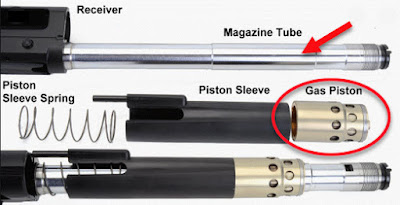Deer Eyes - The Science of Sight
The information in this post comes from the November 2014 issue of Petersen's Hunting magazine. The article was written by Ben O'Brien. I'm not attempting to violate any copyrights here, and I want you to know the source of the data.
Wanna know what deer see? More importantly, wanna know what they don't? Read on...
Back in 1994, Dr. Jerry Jacobs and Dr. Jay Neitz completed a study on deer vision at the Warnell School in Georgia with Dr. Karl Miller. They found that deer have only two classes of receptors versus the three we humans have. Thus, deer can see the differences between short and long wavelength light but NOT the middle to long wavelength light.
Thus the good doctors contend that deer can distinguish between blue and yellow, but not the differences in green, yellow, orange, and red. Understand that all of this was based on the make-up of a deer's eyeball.
Other facets of deer vision:
- A deer's vision is based mostly on movement - the keen ability to sense a stationary object from a moving object (*Note 1).
- Deer see everything in equal focus - not much depth perception.
- Deer can see around them in 310 degrees (think about that - humans are lucky to get 120 degrees, and most of that is peripheral vision. For example, your focusing on these words right now to be able to read text - that is only within the 6 degrees of the macula. Don't believe me - look it up here: http://en.wikipedia.org/wiki/Vision_span).
Now before you go all feeling sorry for the deer, thinking that the Good Creator ripped them off, think about their entire package. They don't number 30 million strong today by being limited in sight.
Enter wildlife biologist Dr. Bradley Cohen. Dr. Cohen took a group of seven doe and trained them to eat from a bin that had a light diode (Pavlov's dog, anyone?). He then played with the color and the intensity of the light - slowly turning it down until the deer could no longer see it. A similar article was published in Outdoor Life, with a video. If you want all the scientific jargon and/or to watch the video, go here: http://www.outdoorlife.com/blogs/big-buck-zone/2014/07/video-new-study-sheds-light-what-deer-see
The results?
Deer can see blue really, really well - in fact, they can see into the UV spectrum. That means they see really well at sunrise and sunset.
What about your Camo?
Camo is sold to humans. Thus, it is based on what and how we see (to attract us) - not what the deer sees. The deer just see a blob - since they can't pick out the detail anyway. Dr. Cohen suggests that all the definitions and depth in today's camo patters are created using greys. Guess what? Deer see the grey as BLUE and can thus see you better.
Also, you should NEVER wash your clothes in detergents containing brightening agents - as this increases your UV signature. It was not stated in the story, but I suspect that UV inhibitors might be a good thing to add to the bag with the scent killer.
You should wear camo that does not contain grey or blue, that breaks up your outline, and don't move.
Is this the end?
Not in my opinion. Now there will be camo that comes out based on this data. Anything to help separate you from your hard-earned cash.
*Note 1: Tom Brown Jr. taught us at his survival school that if you take one step every 30-45 seconds, then that is slow enough to keep a deer from seeing the movement. It's not easy. Try it. Lift your foot off the ground and move it to take one step, not completing that step for 45 seconds - but moving the whole time. It takes an awful lot of balance.




Comments
Post a Comment